It is a well-known fact that every other teenager in China wants to become an “influencer”, “KOL” or “WangHong” (网红): a social media personality with a large following and glamorous lifestyle.
But how much do influencers make in China? And how does that compare to the revenues of Western influencers?
Revenues of influencers outside China
Instagram influencers
The average rate of a sponsored Instagram posts by influencers with over 1 million followers on Instagram is $1,405 USD, according to a 2017 survey of 2,885 influencers by marketing company Influence.
Estimates given by the Influencer Marketing Hub calculator are slightly higher. According to the tool, the fashion influencer Danielle Bersntein (@weworewhat) would bill between $4,000 USD to $6,700 USD for a post to her 2 million followers. Johannes Huebl could charge similar amounts with “only” 987,159 followers, on account of his high 2.34% engagement rate.
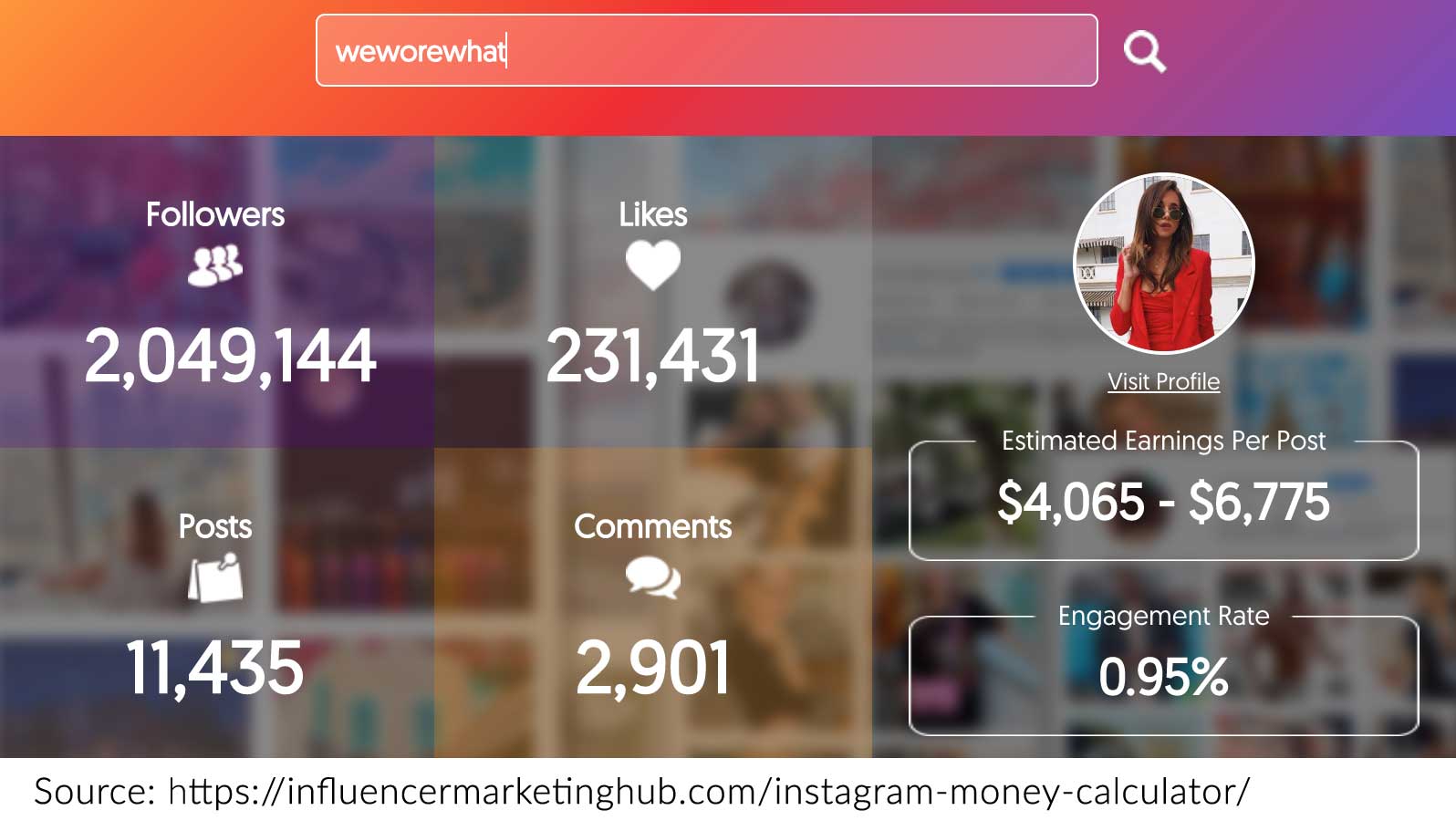
Overall by cross-checking sources, we can assume an Instagram influencer with a following of 1 million followers will charge somewhere between $1,000 USD to $5,000 USD for a post, depending on the level of engagement.
Assuming these influencers generate between 40 to 100 brand collaborations per year (that’s between 1 to 2+ collaborations per week, a very high turnover) they would end up with $40,000 to $500,000 USD yearly revenue.
YouTube influencers
YouTube is perceived by marketers as an even stronger marketing channel: YouTube “cost per follower” is about double what it is on Instagram, and an influencer with 1 million followers would easily collect $5,000 USD to $10,000 USD for a paid endorsement.
Influencers are however more scrutinized on YouTube than they are on Instagram, and tend to publish sponsored content less frequently. A typical YouTube influencer with 1M followers could collaborate at most with around 10-20 brands every year, generating $50,000 to $200,000 USD in revenues.
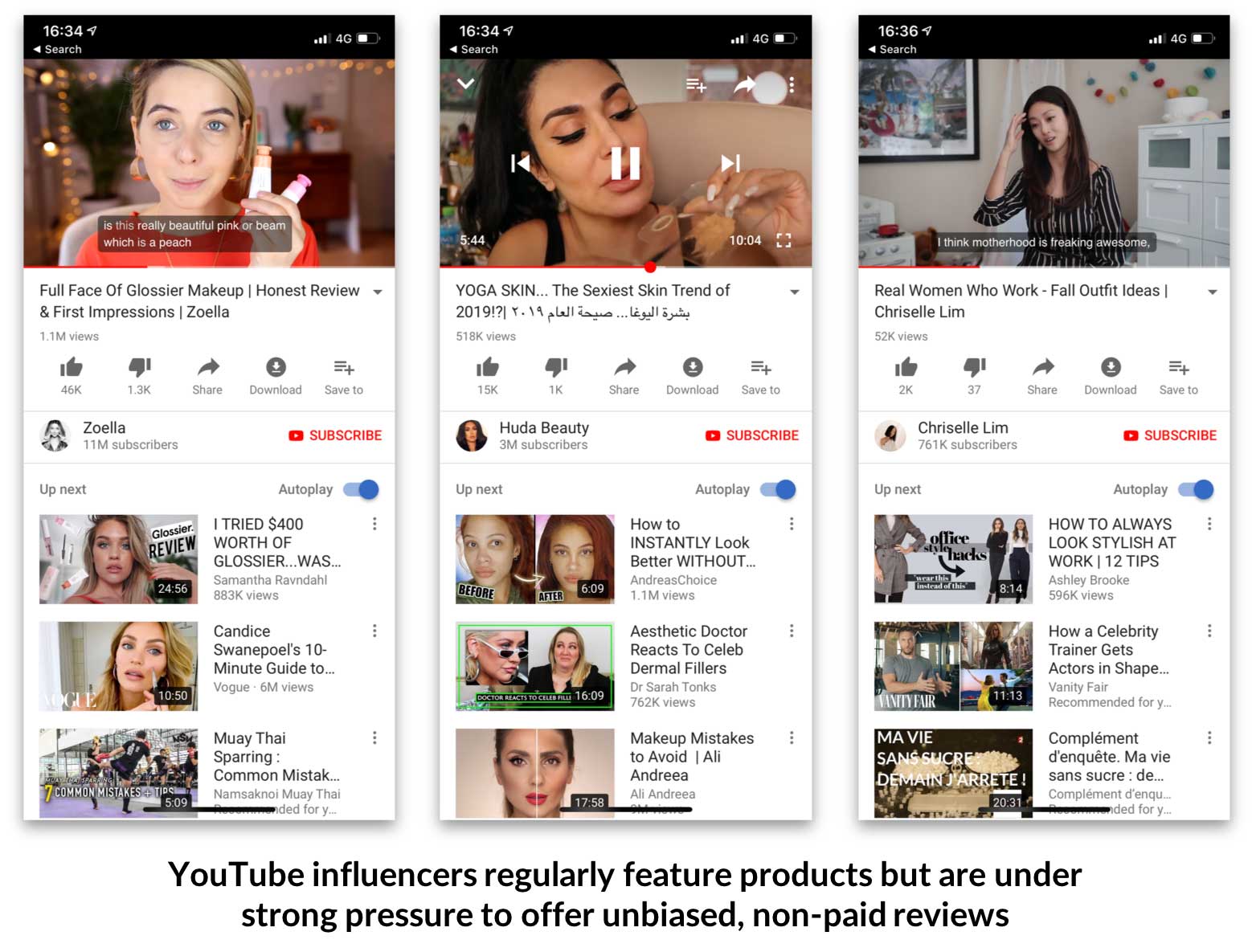
Unlike Instagram, brand collaboration is however not the only sources of revenue for YouTube influencers. The platform also shares part of its programmatic advertising revenue with content publishers.
According to the Influencer Marketing Hub, YouTube influencers can make $3 – $5 per 1,000 video views. YouTube beauty influencer Chrisppy Makeup (1.6M followers) published around 40 videos last year, with around 80,000 average views. She would have made around $9,600-$16,000 USD from YouTube ads. A nice boost, but not a large sum of money by any means.
At the end of the day, a YouTube influencer with 1 to 2 million followers can expect to generate around $60,000 USD to $200,000 USD per year from his or her channel (and likely closer to the lower end of this scale).
Affiliate networks
Another growing channel of monetization for influencers is affiliate links: redirecting users to an e-commerce page with a specific tracking link and getting a percentage of the sale.
The platform RewardStyle has been booming in this space. It claims more than $3 billion USD in sales generated by its 25,000 influencers across its 8 years of existence.
RewardStyle even offers a “LIKEtoKNOW.it” App which enables users to follow influencers and to easily access the e-commerce page of products featured in their posts.
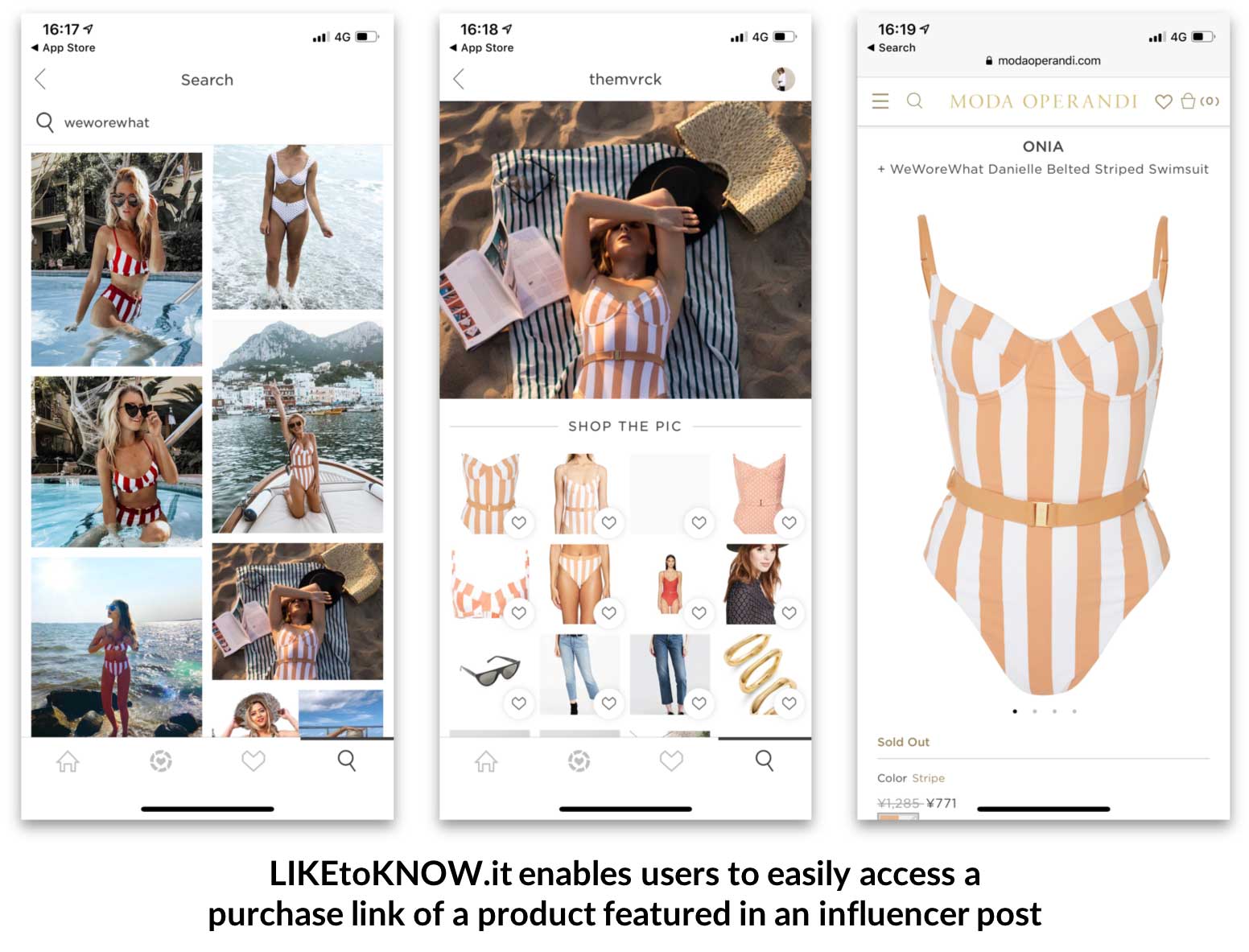
How much money does that mean for influencers? Given that the platform pays around 10% of commission on average, it comes down to only about $2,000 USD per influencer and per year on average (given that this revenue is however concentrated over fewer influencers and around the last years of operation of the business, we can assume that quite a few influencers make significant revenue from the platform – the platform claims that the number of influencers making more than $100,000 USD per year nearly doubled between 2016 and 2017).
Revenues of influencers in China
Collaboration with brands
China’s influencer ecosystem is much more involved with brand promotions. There are two main reasons for this difference between mainland China and the rest of the world:
- CPC/CPM (cost per click/cost per impression) advertising is less developed in mainland China. In the U.S, advertisers will see a very good return on investment from Google and Facebook advertising. There is no direct equivalent in China, and much of this budget is redirected to influencer campaigns
- Followers of Chinese influencers are much more tolerant toward advertising. Whereas sponsored posts tend to create a backlash in the West (accusing influencers of “selling out”), Chinese followers tend to embrace and encourage collaboration between influencers and brand they love or are interested in discovering.
When it comes to cost, WeChat influencers tend to be on the higher end of the price scale. A typical WeChat campaign will cost between 0.5 RMB and 1.5 RMB per view.
For instance, WeChat influencer “After Party”, with 550,000 followers and about 32,000 average views charges 40,000 RMB for one post. WeChat KOL “blogger手账” with 70,000 average views charges 33,000 RMB for one post.
Overall the cost of one WeChat influencer campaign averages around 1 RMB per view.
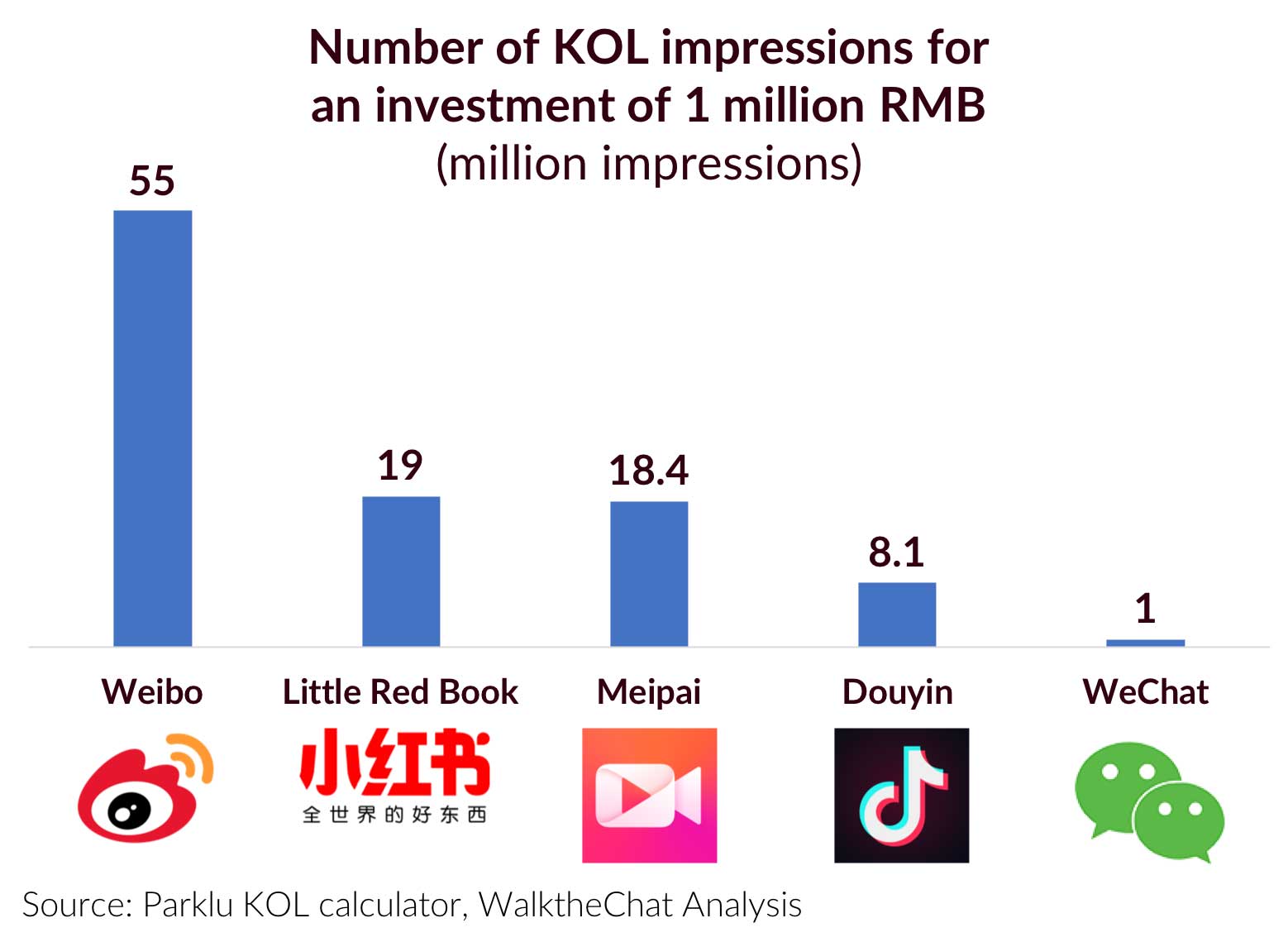
Douyin turns out to be one of the next more expensive social networks to run KOL campaigns on, while Weibo sits on the other end of the spectrum, 55 times cheaper than WeChat! (which doesn’t mean that the Weibo campaigns will be 55 more efficient than WeChat campaigns: the value of a WeChat impression can be so high that WeChat will lead to higher return on investment with similar budgets)
Chinese influencers also tend to be much more likely to be run by large teams, which enables more frequent partnerships with brands. Chinese influencer Gogoboi charges around $50,000 USD per promotion message and can run up to 15 brand collaboration each month. That’s $9 million USD of yearly revenue solely from WeChat advertising for an account estimated to gather around 8M followers.
Gogoboi’s Weibo account, with nearly 10 million followers, likely brings in an additional $15,000 USD per post, with around 10 collaborations per month, netting another $1.8M USD per year of revenue from Weibo advertising.
E-commerce direct sales
China enabled a whole ecosystem of e-commerce run by influencers which are nearly non-existing in the West.
While some superstar influencers such as Becky Li decided to launch their own brand, many influencers such as Gogoboi chose to leverage platforms such as LOOK. LOOK enables influencers to create their own WeChat Mini-program Store without having to worry about the logistics of shipping the products and dealing with customer service (which is all handled by the LOOK platform).
Unlike RewardStyle, influencers do more than sharing a link: they operate their own store where they decide assortment, special campaigns and sometimes pricing.
Xiaoxiaobaomama, a popular childcare KOL, runs a popular WeChat Mini-program Store generating more than 80M RMB of sales per month. Assuming a 30% commission on all product sales, it is about $43M of revenues every year.
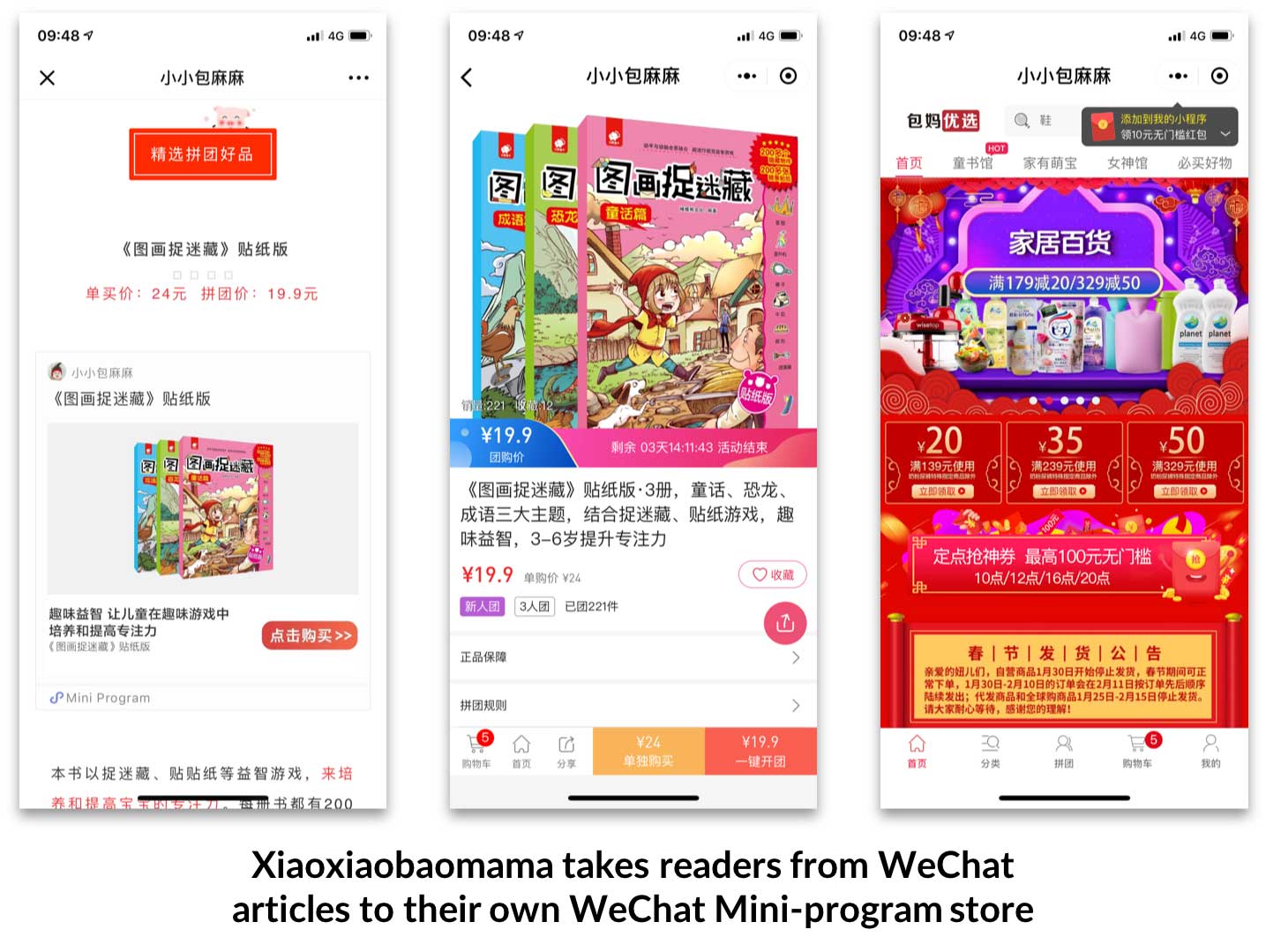
Programmatic advertising
The last method of promotion for Chinese influencers is the display of banners within their account. Authors can choose to display automated ads into their posts, and WeChat will share with them roughly 8-10% of the advertising revenue.
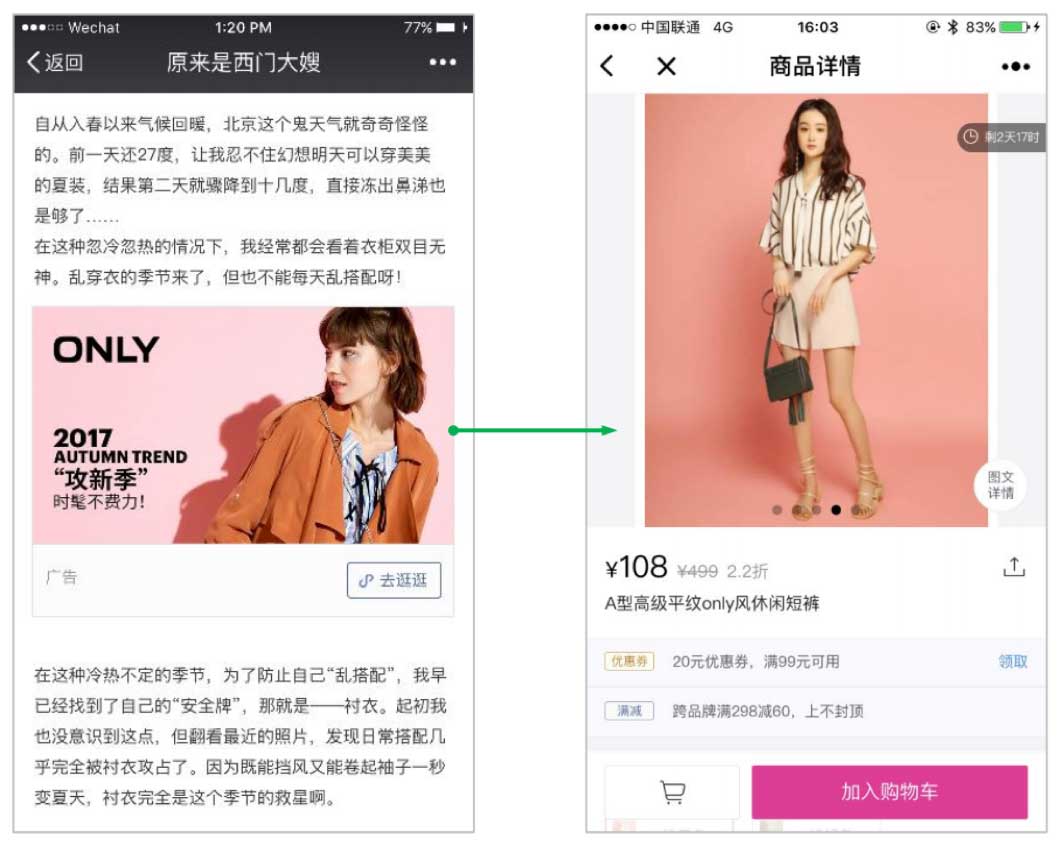
WeChat Official Account PupuLab普普实验室 has an average article view of 20,000. Assuming a 1% view to click rate, and 0.5 RMB CPC, one article would only bring 100 RMB ads revenue. This amount is insignificant compared to the 70,000 RMB charged for brand collaborations.
Overall, programmatic advertising is a negligible source of revenue for Chinese influencers.
So, who is better off?
Overall, it is unquestionable that Chinese influencers tend to yield much better returns than their Western counterparts.
The main drivers of this difference are:
- Less competition from advertising platforms
- Better integration between influencer posts and e-commerce
- Chinese customers are more open to seeing native advertising in influencer posts
- Larger teams operating influencer accounts
- Chinese influencers tend to diversify revenue streams (WeChat ads, Weibo ads, Douyin, E-commerce, etc.)
While many Western influencers struggle to make a living, Chinese influencers are quickly sought after and can easily monetize their following. Larger accounts also tend to be more profitable, with opportunities to generate dozens of million USD of revenue both from advertising and e-commerce.
Which influencers are ideal for brands?
In China and abroad, brands tend to focus on influencers which are too large to bring an actual return.
Thinking of promoting your brand in the West? You might think of Kim Kardashian as one of the top Western influencers. But the picture is more nuanced: you might be better off collaborating with Mr Dombaza, a San Francisco musician with only 28,000 followers but an Instagram engagement rate about 10 times higher than Kim Kardashian!
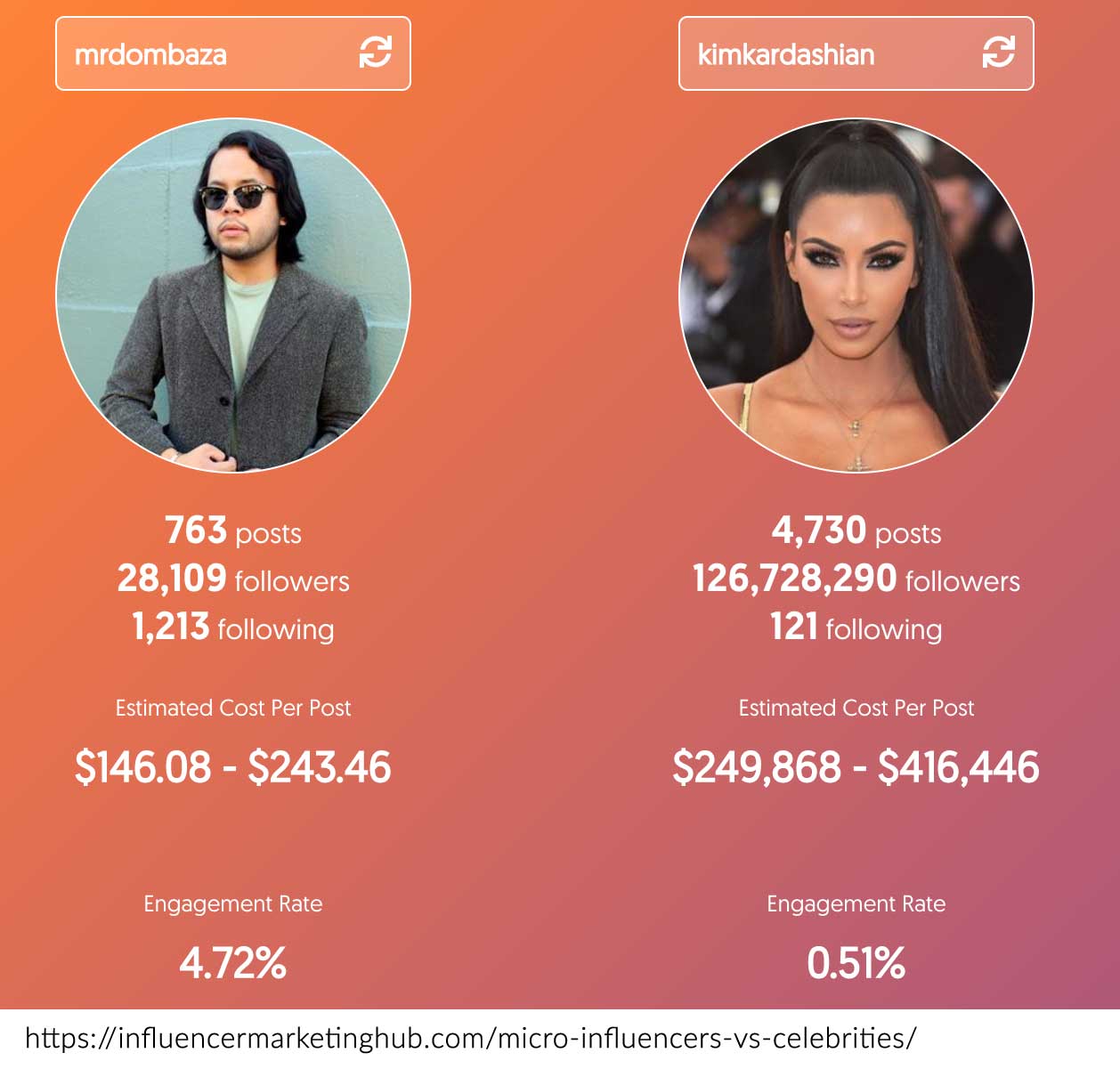
A similar pattern exists in China. A campaign with Gogoboi is a risky bet as it might not cover your $50,000 USD investment (except if taking into account the long-term PR benefits). However, working with influencers with 50,000 to 500,00 followers will very often lead to returns between 3x to 8x your marketing expense.
Conclusion
China benefits from a striving ecosystem of influencers, much more developed than its Western equivalent.
The strong appetite of followers for brand recommendations are advantageous for KOLs and for brands: both benefit from strong demand for quality branded content.
As brands start leveraging this ecosystem, they should focus on mid-size KOL with enough influence to drive sales, but not so big that their cost per engagement would start to decrease (the sweet-spot is around 200,000 followers).

